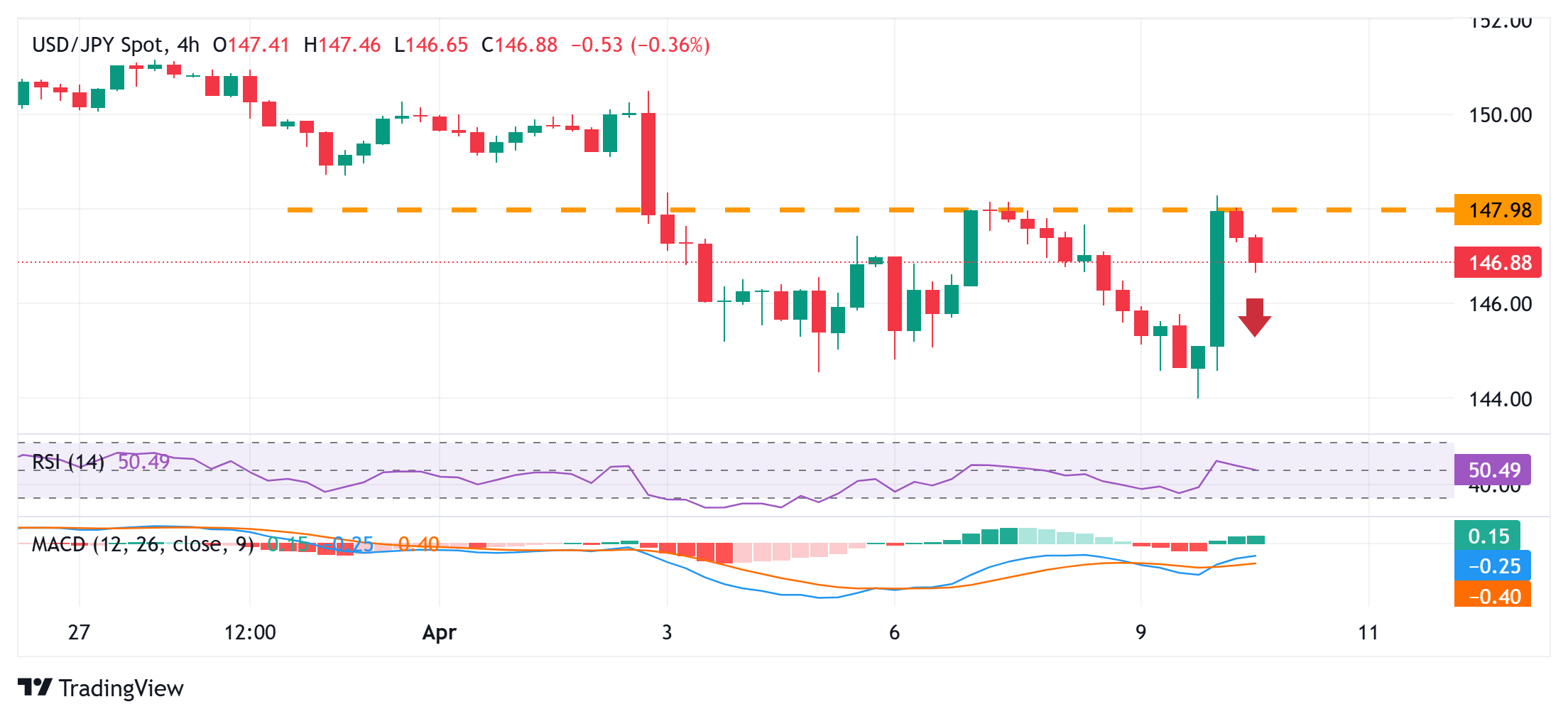Japanese Yen adds to intraday gains and drags USD/JPY back closer to mid-146.00s

- The Japanese Yen attracts fresh buyers as stronger PPI reaffirms BoJ rate hike bets.
- Hopes for a US-Japan trade deal turn out to be another factor benefiting the JPY.
- A solid recovery in the global risk sentiment could cap gains for the safe-haven JPY.
The Japanese Yen (JPY) retains its bullish bias through the Asian session on Thursday amid bets that the Bank of Japan (BoJ) will continue raising interest rates, bolstered by stronger Producer Price Index (PPI) from Japan. Apart from this, expectations that Japan might strike a trade deal and the escalating US-China trade war turn out to be other factors underpinning the safe-haven JPY. This, along with a modest US Dollar (USD) downtick, drags the USD/JPY pair back closer to the mid-146.00s.
Market participants have been pricing in the possibility of multiple interest rate cuts by the are holding in negative territory and are still away from being in the oversold zone. This, in turn, favors bearish traders and suggests that the path of least resistance for spot prices remains to the downside. Hence, a subsequent slide towards the 146.30 intermediate support, en route to the 146.00 mark, looks like a distinct possibility. Some follow-through selling would expose the next relevant support near the 145.50 region before the pair eventually drops to the 145.00 psychological mark.
On the flip side, the 147.75 zone, followed by the 148.00 mark, could act as an immediate hurdle ahead of the 148.25-148.30 region, or the weekly high touched on Wednesday. A sustained strength beyond the latter would set the stage for an extension of the previous day’s goodish rebound from sub-144.00 levels, or the lowest since October 2024, and allow the USD/JPY pair to reclaim the 149.00 round figure. The momentum could extend further towards the 149.35-149.40 area en route to the 150.00 psychological mark.
Japanese Yen FAQs
The Japanese Yen (JPY) is one of the world’s most traded currencies. Its value is broadly determined by the performance of the Japanese economy, but more specifically by the Bank of Japan’s policy, the differential between Japanese and US bond yields, or risk sentiment among traders, among other factors.
One of the Bank of Japan’s mandates is currency control, so its moves are key for the Yen. The BoJ has directly intervened in currency markets sometimes, generally to lower the value of the Yen, although it refrains from doing it often due to political concerns of its main trading partners. The BoJ ultra-loose monetary policy between 2013 and 2024 caused the Yen to depreciate against its main currency peers due to an increasing policy divergence between the Bank of Japan and other main central banks. More recently, the gradually unwinding of this ultra-loose policy has given some support to the Yen.
Over the last decade, the BoJ’s stance of sticking to ultra-loose monetary policy has led to a widening policy divergence with other central banks, particularly with the US Federal Reserve. This supported a widening of the differential between the 10-year US and Japanese bonds, which favored the US Dollar against the Japanese Yen. The BoJ decision in 2024 to gradually abandon the ultra-loose policy, coupled with interest-rate cuts in other major central banks, is narrowing this differential.
The Japanese Yen is often seen as a safe-haven investment. This means that in times of market stress, investors are more likely to put their money in the Japanese currency due to its supposed reliability and stability. Turbulent times are likely to strengthen the Yen’s value against other currencies seen as more risky to invest in.
